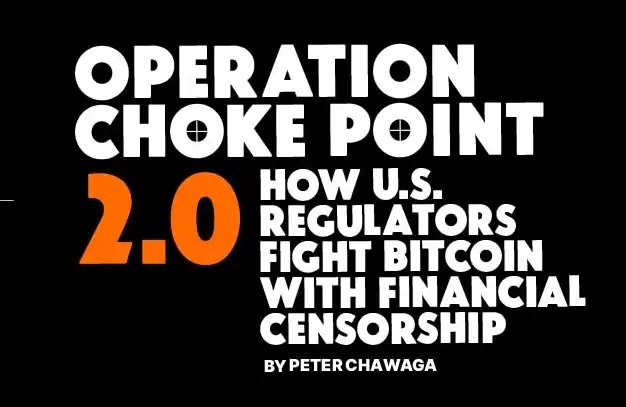Are FHE, ZK, and MPC technical concepts too confusing? This article will help you sort it out
Original author: 0xTodd, Ebunker Lianchuang
Editor's note: In the previous article: 《Vernacular Interpretation: The Connotation and Application Scenarios of FHE Fully Homomorphic Encryption》, Ebunker Lianchuang 0xTodd explained the connotation and application scenarios of FHE fully homomorphic encryption in plain language. FHE, ZK and MPC technologies can be said to be the pearls on the holy grail of three cryptography. But the concepts are complicated, and some friends are always easily confused. In this article, 0xTodd once again uses concise language to comprehensively compare the similarities and differences of these three technologies. BlockBeats reproduces the full text as follows:
Last time we analyzed how the fully homomorphic encryption (FHE) technology works.
However, many friends still confuse FHE with ZK, MPC encryption technologies, so the second thread plans to compare these three technologies in detail:
FHE vs ZK vs MPC
First, let's start with the most basic questions:
- What are these three technologies?
- How do they work?
- How do they work for blockchain applications?
1. Zero-knowledge proof (ZK): Emphasis on "proof without disclosure"
The proposition explored by zero-knowledge proof (ZK) technology is: How to verify the authenticity of information without revealing any specific content.
ZK is built on a solid foundation in cryptography. Through zero-knowledge proof, Alice can prove to the other party, Bob, that she knows a secret without revealing any information about the secret itself.
Imagine a scenario where Alice wants to prove her credit to Bob, an employee at a car rental company, but she doesn't want to go to the bank to get a bank statement or something like that. At this time, for example, the "credit score" of a bank/payment software is comparable to her "zero-knowledge proof."
Alice proves that her credit score is good without showing her account statement under the condition that Bob "knows nothing". This is zero-knowledge proof.
If applied to blockchain, you can refer to a previous anonymous coin, Zcash:
When Alice transfers money to others, she needs to be anonymous and prove that she has the power to transfer these coins (otherwise it will lead to double spending), so she needs to generate a ZK proof.
So, after seeing this proof, miner Bob can still put the transaction on the chain without knowing who she is (i.e. zero knowledge of Alice's identity). 
2. Multi-party secure computing (MPC): Emphasis on "how to calculate without leaking"
Multi-party secure computing (MPC) technology is mainly used for: How to allow multiple participants to calculate together safely without leaking sensitive information.
This technology allows multiple participants (such as Alice, Bob and Carol) to complete a computing task together without any party revealing their input data.
For example, if Alice, Bob, and Carol want to calculate the average salary of the three of them without revealing their specific salaries. How do they do it?
Each person can divide their salary into three parts and exchange two of them with the other two. Each person adds up the numbers they receive and then shares the result.
Finally, the three people sum up the three sums to get the average, but they cannot determine the exact salary of anyone other than themselves.
If applied to the crypto industry, MPC wallets use this technology.
Take the simplest MPC wallet launched by Binance or Bybit as an example. Users no longer need to save 12 mnemonics, but it is a bit like changing the private key to 2/2 multi-signature, with one for the user's mobile phone, one for the user's cloud, and one for the exchange.
If the user accidentally loses his or her mobile phone, at least the cloud + exchange can still recover it. 
Of course, if higher security is required, some MPC wallets can support the introduction of more third parties to protect private key fragments.
Therefore, based on the cryptographic technology of MPC, multiple parties can use private keys safely without trusting each other.
3. Fully homomorphic encryption (FHE): Emphasis on "how to encrypt in order to find outsourcing"
As I said in the previous thread, fully homomorphic encryption (FHE) is applied to: how do we encrypt, so that after sensitive data is encrypted, it can be handed over to an untrusted third party for auxiliary calculation, and the result can still be decrypted by us.

For example, Alice has no computing power and needs to rely on Bob to calculate, but she doesn't want to tell Bob the truth, so she can only introduce noise into the original data (do any number of addition/multiplication encryption), and then use Bob's powerful computing power to process the data, and finally Alice decrypts it to get the real result, while Bob knows nothing about the content.
Imagine that if you need to process sensitive data such as medical records or personal financial information in a cloud computing environment, FHE is particularly important.
It allows data to remain encrypted throughout the processing process, which not only protects data security, but also complies with privacy regulations.
Last time, we focused on analyzing why the AI industry needs FHE. So what applications can FHE bring to the encryption industry?
For example, there is a project called Mind Network, which received the Ethereum Grant and is also a project of Binance Incubator. It focuses on a native problem of the PoS mechanism:
PoS protocols like Ethereum have 1 million+ validators, so there is naturally no problem. But for many small projects, the problem comes, and miners are lazy by nature.
Why do you say that? In theory, the work of a node is to diligently verify whether each transaction is legal. But some small PoS protocols do not have enough nodes, and include many "big nodes".
Therefore, many small PoS nodes have found that instead of wasting time calculating and verifying by themselves, it is better to directly follow and copy the ready-made results of the big nodes.
This will undoubtedly bring about very exaggerated centralization.
In addition, for example, the voting scene also has this kind of "following" signs.
For example, in the previous voting of the MakerDAO protocol, because A16Z had too many MKR votes at that time, its attitude often played a decisive role in certain protocols. After A16Z voted, many small voting bases could only be forced to follow the vote or abstain, which could not reflect the true public opinion at all.
Therefore, Mind Network used FHE technology:
When PoS nodes *do not know* each other's answers, they can still use machine computing power to complete the verification of blocks to prevent PoS nodes from copying each other.
or
When voters *do not know* each other's voting intentions, they can still use the voting platform to calculate the voting results to prevent following the vote.

This is one of the important applications of FHE in blockchain.
Therefore, in order to achieve such a function, Mind also needs to rebuild a re-staking nesting doll protocol. Because EigenLayer itself will provide "outsourced node" services for some small blockchains in the future, if combined with FHE, it can greatly improve the security of PoS network or voting.
To make an inappropriate analogy, the introduction of Eigen+Mind to a small blockchain is a bit like a small country that cannot handle its own internal affairs, so it introduces foreign troops.
This is also one of the differences between Mind and Renzo and Puffer in the PoS/Restaking branch. Mind Network started later than Renzo and Puffer, and has just launched the main network recently. Relatively speaking, it is not as popular as Re-taking summer.
Of course, Mind Network also provides services on the AI branch, such as using FHE technology to encrypt data fed to AI, and then allowing AI to learn and process this data without knowing the original data. Typical cases include cooperation with the bittensor subnet.
Finally, let’s summarize:
Although ZK (zero-knowledge proof), MPC (multi-party computing), and FHE (fully homomorphic encryption) are advanced encryption technologies designed to protect data privacy and security, they are different in application scenarios/technical complexity:
Application scenario:
ZK emphasizes "how to prove". It provides a way for one party to prove the correctness of a piece of information to another party without revealing any additional information. This technology is very useful when it is necessary to verify permissions or identities.
MPC emphasizes "how to calculate". It allows multiple participants to perform calculations together without revealing their respective inputs. This is useful in situations where data cooperation is required but the privacy of data of all parties must be protected, such as cross-institutional data analysis and financial audits.
FHE emphasizes "how to encrypt". It makes it possible to entrust complex calculations while keeping the data encrypted at all times. This is especially important for cloud computing/AI services, where users can safely process sensitive data in a cloud environment.
Technical Complexity:
Although ZK is theoretically powerful, designing effective and easy-to-implement zero-knowledge proof protocols can be very complex and requires deep mathematical and programming skills, such as various "circuits" that everyone does not understand.
MPC needs to solve synchronization and communication efficiency problems when implementing it, especially when there are many participants, the coordination cost and computational overhead can be very high.
FHE faces huge challenges in terms of computational efficiency, and the encryption algorithm is relatively complex. It was not until 2009 that it was formed. Although it is very attractive in theory, its high computational complexity and time cost in practical applications are still major obstacles.
To be honest, the data security and personal privacy protection that we rely on are facing unprecedented challenges. Imagine that without encryption technology, the information in our text messages, takeouts, and online shopping processes would be exposed. Just like an unlocked door, anyone can enter at will.
I hope that friends who are confused about these three concepts can thoroughly distinguish these three pearls on the holy grail of cryptography.
Original link
Welcome to join the official BlockBeats community:
Telegram Subscription Group: https://t.me/theblockbeats
Telegram Discussion Group: https://t.me/BlockBeats_App
Official Twitter Account: https://twitter.com/BlockBeatsAsia
 Forum
Forum OPRR
OPRR Finance
Finance
 Specials
Specials
 On-chain Eco
On-chain Eco
 Entry
Entry
 Podcasts
Podcasts
 Data
Data


 Summarized by AI
Summarized by AI






